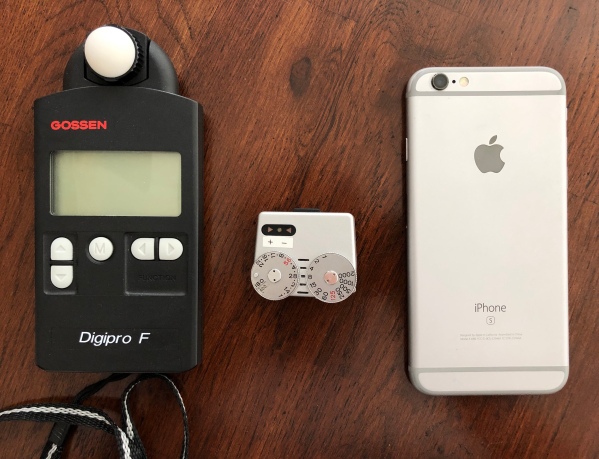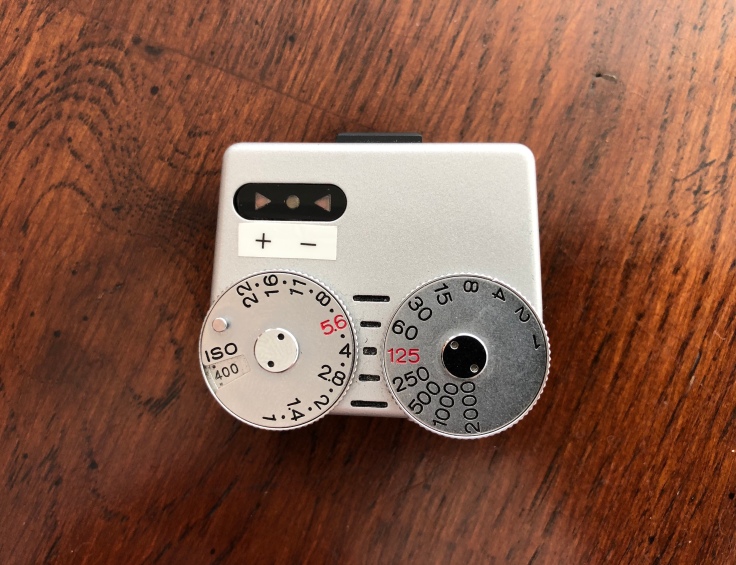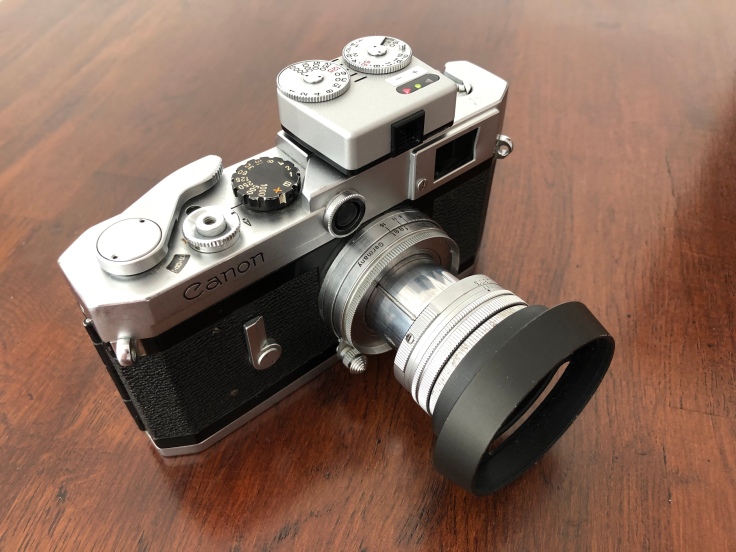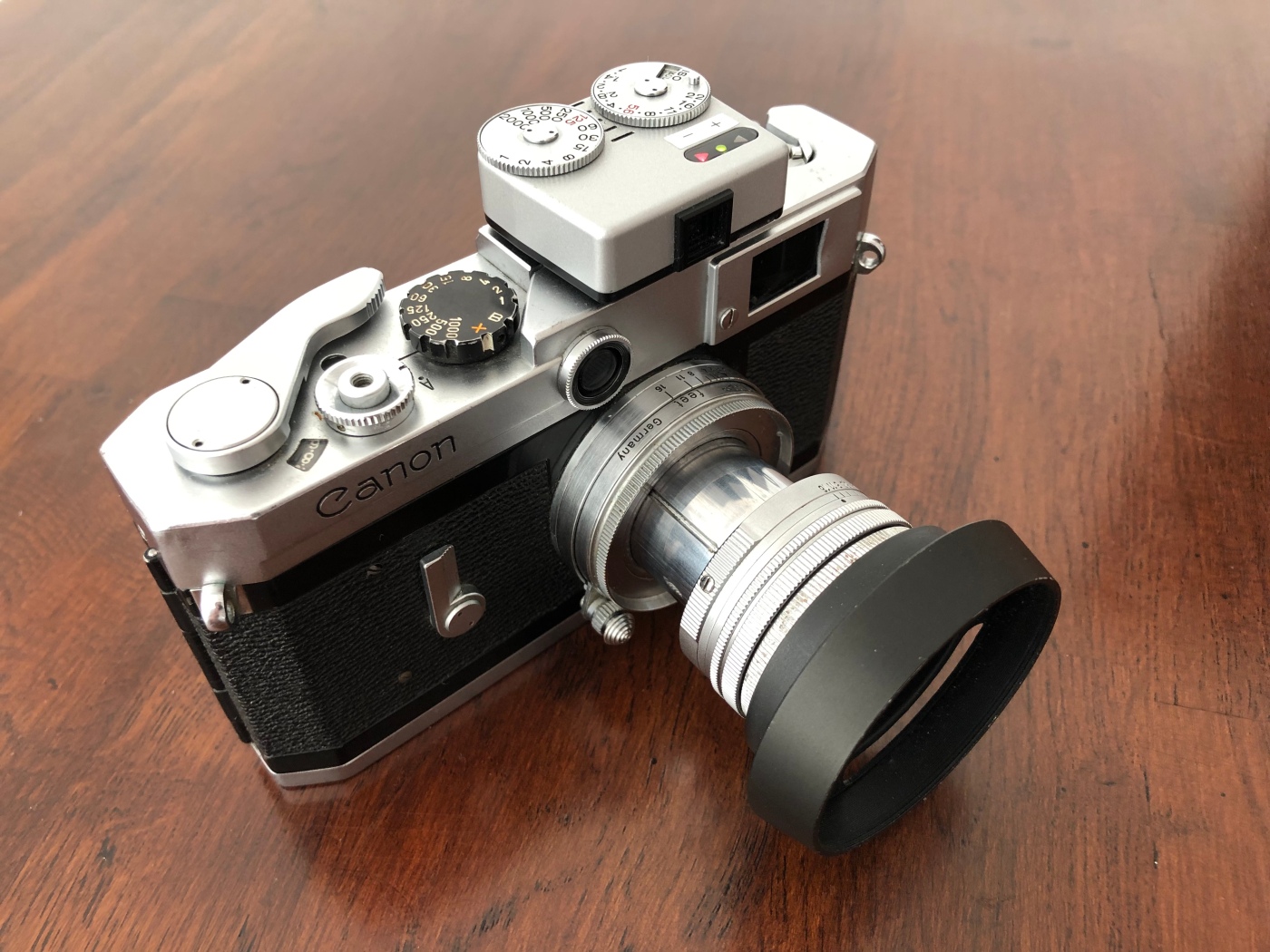Unless you’re a studio photographer, the first time that most film shooters consider purchasing a light meter is when they fall in love with some beautiful vintage camera that does not feature a built-in light meter.
When I was younger, I naively clung to cameras with built-in meters, not fully appreciating bodies such as early Leica, Konica, Yashica, etc cameras that were built before light meters could be integrated atop or inside of the viewfinder.
I am sure that I’m preaching to the choir when I note that build quality of cameras, and many consumer devices was held to a considerably higher standard prior to the advent of transistors and micro-electronics. If you’d like to make use of cameras from this era, as well as more recently-built cameras that simply exclude electronics, you will probably want to pick up a light meter of some sort.
So it’s 2019 and you’re rockin’ a 1930’s Leica, 1960’s Hasselblad, or just a Pentax with a busted meter. What are your choices?

Perhaps everyone’s Option One is their smart phone. Most of us, even the Luddites, have one by now. And just as the best camera is the one in your hand, perhaps the best meter is too.

What’s nice about using a smart phone light meter app is that you aren’t carrying anything that you probably wouldn’t already be carrying.
I am sure that I could write an entire blog of recommendations for all the various light meter apps that are available, but I really don’t care! So you’ll have to do your own digging for them. But I’ll tell you that even a very cheap, basic light meter app such as Pocket Light Meter is totally sufficient for general use. I’ve used it on three generations of iPhone and enjoy how quick and simple it is. For b&w print film, it’s been reliable.
There are much more complicated, sophisticated light meter apps available. Some even have accessory diffuser domes for taking incident readings like a real handheld meter. And of course, you can take the photo digitally, review a histogram, all kinds of useful exposure information is available from your telephone! From a technical standpoint, one would think that the smart phone would have put dedicated light meters in the ground by now. I mean, why bother buying specialty hardware at all?
Well, there are a few shortcomings of the smart phone light meter. While I mentioned decent battery life, fact is, you won’t be living off the land and toting a smart phone because it needs to be charged every couple days or so. And they’re not exactly fast. Often while using a smart phone meter, I am forced to re-open/unlock my phone or am distracted by texts and other notifications while trying to shoot. Nothing pisses me off more than having my concentration broken by a robo-dialer.

So while it may seem like an extravagant expense, a good, old fashioned, dedicated handheld meter might be better for your nerves!
Battery life is usually something you can forget about. I think I’ve only changed the single Double A battery in my Gossen Digipro F twice in the decade I’ve owned it. Dedicated meters don’t ring loudly and unexpectedly while you’re quietly poised to carefully take a photo. Random notifications don’t appear on their screens alerting you to completely unrelated matters. And they can actually do more than most light meter apps. They allow both incident and reflective measurements (no need to buy additional accessories in most cases) and some even do, or are, spot-meters.
Some might argue that dedicated meters are more accurate than your smart phone too. I am sure that is a technical can of worms to unpack so I’ll leave those debates to someone else. But beyond basic meter apps, most handheld meters also do things like measure contrast ratio, provide cine settings for motion picture, have freakishly wide and reliable EV/ISO ranges, can directly connect to strobes and other nuanced stuff that I haven’t even dealt with.
I am not a studio guy. Hell, I’m not even a hyper-accurate guy. It’s horseshoes and hand-grenades for me. So the Gossen Digipro F (replaced by the Digipro F2) has been all the handheld meter that I personally need. My only quibble is lack of backlight to the LCD, rendering it useless in low light. The F2 version solves by automatically illuminating the LCD in low EV levels, wow! What I like about the Gossen though is that I have set it to display shutter speeds in full stops and apertures in half stops, both on a modern scale. So it’s fast to read and understand. The contrast measurement feature is also fast to read and a welcomed addition to a basic built-in meter. These features alone overrule my use of an old analog Sekonic, vintage Gossen or one of those unstoppable little Weston selenium meters.
When I’m “in the shit,” however, there’s no time to drop my camera, pick up my handheld meter, drop the handheld meter, pick up my camera again, set it and… eventually… take the photo. I could never cover wedding receptions or concerts this way. So what do you do when you want the speed and convenience of a built-in meter but have this incredible hard-on for your Barnack Leica?

There have been many accessory, clip-on light meters over the decades but the Voigtlander VC II is hands-down, the absolute finest. While it costs about as much as a decent handheld meter, you can buy it and never buy another clip-on meter, unless you want several copies of the VC II!
Amazingly, as far as I know, Voigtlander are the only company to build an LED display clip-on light meter. Clip-on light meters of yesteryear, even those by Leica, were rather large, klunky affairs. The bright three LED read-out in combination with simple, mechanical ISO, Shutter and Aperture controls which mimic those found on your camera, make the VC II an formidable tool. So fast and intuitive to use, in daylight or darkness. No guessing, plenty accurate. AND TINY!!!! Looks right at home on most 35mm rangefinders and even medium format folders.
The only downside comes with its vast compatibility; the VC II cannot couple to the shutter speed or aperture of the camera, the way some vintage camera-specific clip-on meters did. This results in the photographer always needing to set the meter then transfer those settings to the camera. An extra step but still faster than a handheld or phone app.
(UPDATE: 2020 has been awash in various OLED clip-on light meters which are not nearly as well crafted or handsome as the Voigt, but do allow for wider EV ranges and night viewing.)

So there you have it, a basic rundown of options for metering the meterless cameras in your collection. Get them off the shelves, stop Sunny 16ing it and take some great, well-exposed photos!
Follow, Favorite, Like, Add, Contact Johnny Martyr


Super useful. I used a vintage GE PR-1 meter for years until I switched to an iPhone; since then I use a meter app. For the kinds of things I shoot it’s sort of annoying, but not the end of the world to pick up the meter/phone, meter, put down the meter/phone, pick up the camera, frame, focus, shoot. Perhaps one day I should invest in an accessory-shoe meter.
LikeLiked by 1 person